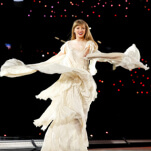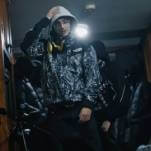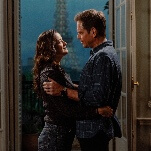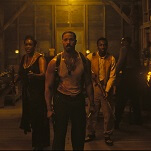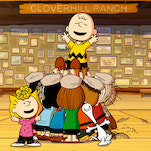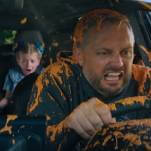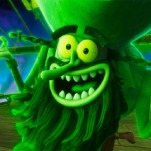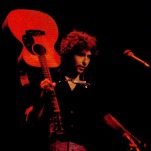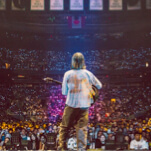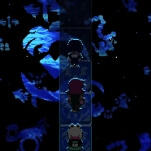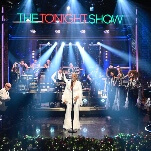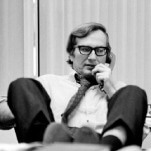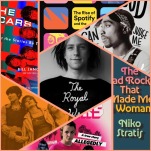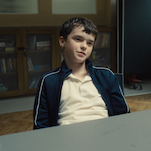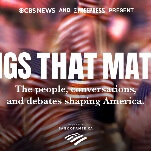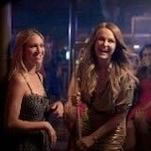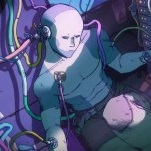Happy Days became one of the biggest hits on TV by selling its soul

For most of the history of television, the barrier to syndication—and to profitability—has been 100 episodes. The shows that have made it to that mark are an unusual group. Many were big hits. Some found small cult audiences. Still others just hung on as best they could and never posted numbers quite low enough to be canceled. In 100 Episodes, we examine shows that made it to that number, considering both how they advanced or reflected the medium and what contributed to their popularity.
Garry Marshall faced a dilemma in the second season of Happy Days. The series, which had initially been an attempt to honestly depict a wistful look back at adolescence (Marshall told the Associated Press in 2004 that it was his “artistic period”), had been a minor Nielsen hit in its first season, but it was sinking like a stone, falling out of the Top 30 and toward certain cancellation. He had one last shot at making the series a success, though it would destroy almost everything he’d set out to create. What he came up with was almost terminally dumb, but it made the show one of the biggest hits in television history, one of the ultimate case stories TV fans can point to when it comes to art versus commerce. Marshall and the show’s other producers took a charming little single-camera comedy about the trials of growing up and made it a loud, kid-friendly, multi-camera comedy more about gimmicks than intelligent storytelling or nuanced characters.
And it worked.
Here’s the thing: It’s rare for this sort of pandering to actually work on television. Television deserves its reputation for seeking the lowest common denominator, but the shows that attract such viewers tend to come by them honestly. Take, for instance, The Beverly Hillbillies, one of the great, dumb hits in TV history. Everybody on that show—from the writers to the directors to the incredibly gifted cast—works their ass off to give the audience a good time. If viewers sit and think about it too much, they’ll start to realize just how stupid it all is, but if they let it wash over them (say, while eating dinner or talking with their kids about their days), then it provides some moderate chuckles and some light entertainment. Like all art, dumb TV usually has to have integrity to be successful.
Audiences can almost always sniff out when a show is being contemptuous of them, thinking that what they want is some dumb bullshit before they turn off the tube and go to bed. Numerous TV producers have tried, earnestly, to create a bad TV show they think the audience will embrace, and nearly all have failed. (The best reference point might be 1983’s Mr. Smith, a beyond-obnoxious comedy about a super-intelligent orangutan created by some of the writers behind Taxi, who were struggling to get more nuanced work on the air. The series immediately bombed.) The people who create the kind of terrible TV that lasts are the Aaron Spellings and Stephen J. Cannells and Chuck Lorres of the world (all of whom have been responsible for at least one or two genuinely good shows). They’re the people who really, honestly try to make shows that won’t make audiences think too hard at any moment. They have a gift for that sort of thing, and perhaps that gift shouldn’t be underestimated.
Marshall, whose career had taken him from Jack Paar’s early Tonight Show to The Dick Van Dyke Show to The Odd Couple, had something of a reputation for quality when he created Happy Days. The two sitcoms listed above are among the best of their respective eras, and the latter was a relentless gag machine, one that laid out a perfect comedic relationship and then spent five seasons finding every possible permutation of that relationship that would make viewers laugh. (Its “Password” episode is an almost perfect sitcom creation, one that should be taught in TV-writing courses if it’s not already.) Happy Days began life as an unsold pilot starring Ron Howard and Marion Ross (and a number of other actors who wouldn’t continue through with the series), and was picked up to air as an episode of the romance anthology series Love, American Style. On the basis of that pilot, George Lucas cast Howard as the lead in his American Graffiti, and suddenly, the long-dormant pilot was of interest to ABC again. Paramount Television sold the show as a series, and it hit the air in 1974 as a midseason replacement.
The differences between the episodes in the series’ first and best season and what came later are legion. For starters, Marshall toned down his joke-heavy style in favor of playing to the show’s single-camera strengths. (At the time, single-camera comedies—shot on location without an audience—were seen as more contemplative and less dependent on broad jokes. The primary example of the form at the time was Howard’s other long-running series, The Andy Griffith Show.) The stories were small and centered on good kid Richie Cunningham (Howard), who had to face down the usual teenage temptations. In the show’s third episode—one of its best—Richie goes out to a bachelor party and gets drunk. What follows is simply an attempt to depict this rite of passage as it might actually happen, within the standards of television of the time.
The series primarily focused on the Cunningham home, where Richie received solid guidance from parents Howard and Marion, and dealt with younger sister Joanie and older brother Chuck (who appeared infrequently). His friends included self-styled jokester Ralph Malph and the more worldly Potsie, who was always getting Richie into bad situations. It’s important not to overstate the quality of the show. Though often charming and sweet, the series was never wildly funny or particularly moving. It opted to be a sort of Leave It To Beaver for the ’70s, only it was still set in the era of that earlier program and didn’t have the character depth of that show. Nostalgia attempted to cover for too much, particularly in an era where sitcoms were earnestly tackling the issues of the day. But Happy Days was often a winning show, and it’s not hard to understand why audiences made it a Top 20 Nielsen hit in that first season. Like The Wonder Years later, the show traded both on nostalgia and adolescent memory, creating a world at once ultra-specific to its era and universal in its appeal.

